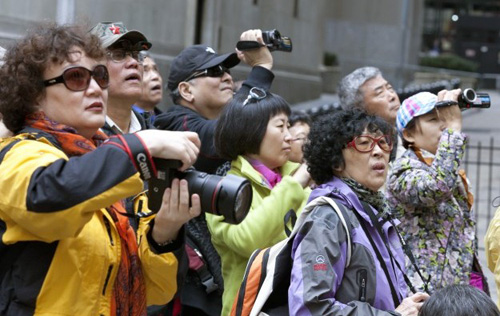The annual rate of growth in the number of Chinese tourists visiting South Korea, Japan and member states of the Association of Southeast Asian Nations (ASEAN) from now until the year 2020 is likely to increase.
The annual rate of growth in the number of Chinese tourists visiting South Korea, Japan and member states of the Association of Southeast Asian Nations (ASEAN) from now until the year 2020 is likely to outpace such tourism growth in Greater China, says a report from Japanese brokerage Nomura.
The institution expects the number of Chinese tourists visiting South Korea and Japan to more than double in the period 2016 to 2020 inclusive – to 15.5 million and 13.5 million, respectively.
The paper, ‘Global tourism: Shifting destinations for Chinese travellers’, is by an 11-strong team of Nomura analysts from across the Asia Pacific region, including China gaming, hotels and leisure specialists Richard Huang and Stella Xing.
The report said that nonetheless Hong Kong was currently “substantially ahead” as mainland China’s “most beloved travel destination”, with the city attracting 18 million overnight Chinese tourists in 2015, more than double the number staying overnight in Macau and Thailand respectively. The latter destinations were second and third, respectively, said Nomura, quoting proprietary research and some from CEIC Data and Euromonitor International.
Visitors from mainland China to Macau in 2015 decreased by 4.0 percent year-on-year to 20.4 million, show data from Macau’s Statistics and Census Service. Such arrivals made up 66.5 percent of the annual total of visitors to Macau.
The Nomura report authors noted: “In 2016 to 2020 full year, we expect all of the Chinese visitation growth to be contributed by countries outside ‘Greater China’ (versus 42 percent in 2006 to 2010 and 50 percent in 2011 to 2015) as Chinese tourists spread their wings.”
South Korea is currently looking to expand its foreigner-only casino industry, attracting overseas investment from the likes of U.S. gaming operator Mohegan Tribal Gaming Authority, also known as Mohegan Sun. Bringing in such investment is with an eye – some investment analysts say – to the likelihood of South Korea receiving growing numbers of Chinese tourists.
A proposal to allow legalisation and operation of casino resorts in Japan – projects that some investment analysts think would be likely to appeal to Chinese tourists – currently seems to be stalled in Japan’s parliament.
While a number of investment analysts fret that Chinese outbound travel to South Korea and Japan could be vulnerable to any deterioration in China’s political relations with those nations, Nomura noted the two countries are just far enough away from home to be exotic for Chinese people.
“We believe Chinese tourists will gradually shift away from pure shopping trips and focus more on leisure and eye-opening experiences when they are travelling abroad,” wrote the Nomura analysts.
Whether that will include spending on casino gambling is a moot point. Nomura said – citing data from the Hong Kong Tourism Board, the Japan Tourism Agency and Tourism Research Australia – that Chinese tourists to Hong Kong spend 70 percent of their trip budget on shopping, while Chinese visitors to Japan and Australia spend only 50 percent of their budget per trip on that activity.
Shop ‘til they stop
Nomura’s report seeks to put some more research-based flesh on the bones of the argument about the likely growing appeal to Chinese of places such as South Korea and Japan on experience-based trips rather than pure shopping.
“According to data from Euromonitor, while China’s outbound travel penetration is substantially lower than most developed countries at 8 percent (versus 18 percent in Japan, 27 percent in the U.S.), the outbound travel spend per capita in China is in fact already on par with that of Japan at US$134 (versus Japan of US$141 and the U.S. at US$372),” said the Nomura report.
“Over the next five years, while we believe Hong Kong will remain the leader [for Chinese tourists], we believe its lead over the other travel destinations will shrink substantially, as we forecast Chinese visitation to [South] Korea and Japan to more than double in 2016 to 2020 full year to 15.5 million and 13.5 million, respectively, leaving them only 4 percent to 17 percent behind Hong Kong,” said Nomura.
The authors added: “In the past, ASEAN has had an edge over North Asian countries, for its low travel cost and looser visa requirements. Both of those edges are gradually narrowing, as [South] Korea and Japan have been aggressively loosening visa requirements for Chinese tourists, granting 10-year multiple entry visas to Chinese citizens (meeting certain criteria) in January 2016 and January 2015, respectively.
“The travel cost to Japan has also been coming down significantly with the 28 percent depreciation in the yen over the past three years,” noted the authors.
